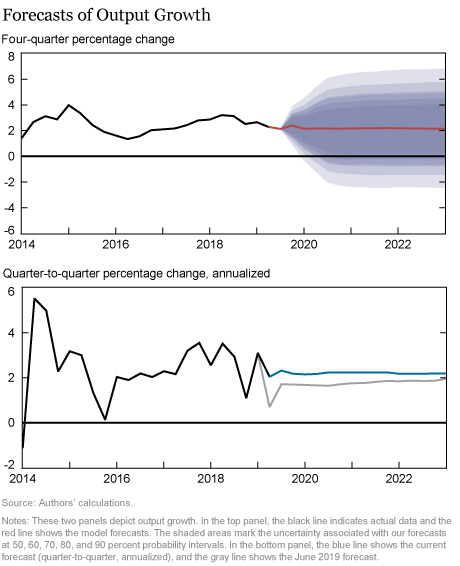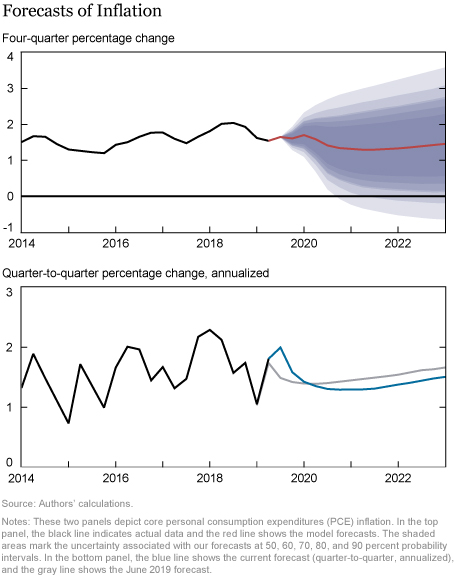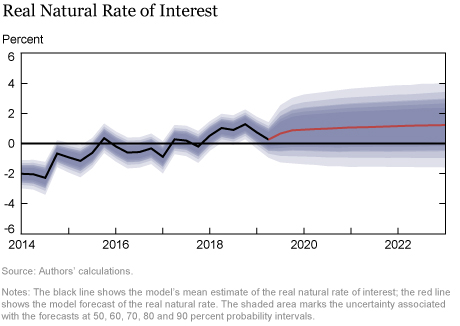This post presents an update of the economic forecasts generated by the Federal Reserve Bank of New York’s dynamic stochastic general equilibrium (DSGE) model. We describe very briefly our forecast and its change since June 2019. As usual, we wish to remind our readers that the DSGE model forecast is not an official New York Fed forecast, but only an input to the Research staff’s overall forecasting process. For more information about the model and variables discussed here, see our DSGE model Q & A.
The September model forecast for 2019-22 is summarized in the table below, alongside the June forecast, and in the following charts. The model uses quarterly macroeconomic data released through the second quarter of 2019, and financial data and staff forecasts available through August 29, 2019.
How do the latest forecasts compare with the June forecasts?
- The current 2019 Q4/Q4 GDP growth forecast is stronger than the one from June (2.4 percent vs. 1.8 percent), as 2019:Q2 real GDP growth was higher than expected. The model attributes this faster-than-projected growth to a productivity boost, the result of both temporary and more persistent factors. The latter lift the model’s projections through the remainder of the forecast horizon.
- Core PCE inflation is expected to be 1.6 percent in 2019—0.2 percentage point higher than projected in June. Inflation forecasts for the remainder of the forecast horizon are lower than the June projections, as higher productivity reduces marginal costs. The uncertainty surrounding both the output growth and inflation projections is sizable.
- The estimates of the real natural rate of interest are slightly lower than those in June over the entire forecast horizon. This is due to a confluence of factors: while the persistent component of productivity tends to push the natural rate up, the temporary component has the opposite effect. In the short run, the latter prevails.





Ozge Akinci is an economist in the Federal Reserve Bank of New York’s Research and Statistics Group.

William Chen is a senior research analyst in the Federal Reserve Bank of New York’s Research and Statistics Group.

Marco Del Negro is a vice president in the Bank’s Research and Statistics Group.

Ethan Matlin is a senior research analyst in the Bank’s Research and Statistics Group.
 is a senior research analyst in the Bank’s Research and Statistics Group.
is a senior research analyst in the Bank’s Research and Statistics Group.
How to cite this post:
Ozge Akinci, William Chen, Marco Del Negro, Ethan Matlin, and Reca Sarfati, “The New York Fed DSGE Model Forecast—September 2019,” Federal Reserve Bank of New York Liberty Street Economics, September 30, 2019, https://libertystreeteconomics.newyorkfed.org/2019/09/the-new-york-fed-dsge-model-forecastseptember-2019.html.
Disclaimer
The views expressed in this post are those of the authors and do not necessarily reflect the position of the Federal Reserve Bank of New York or the Federal Reserve System. Any errors or omissions are the responsibility of the authors.














 RSS Feed
RSS Feed Follow Liberty Street Economics
Follow Liberty Street Economics